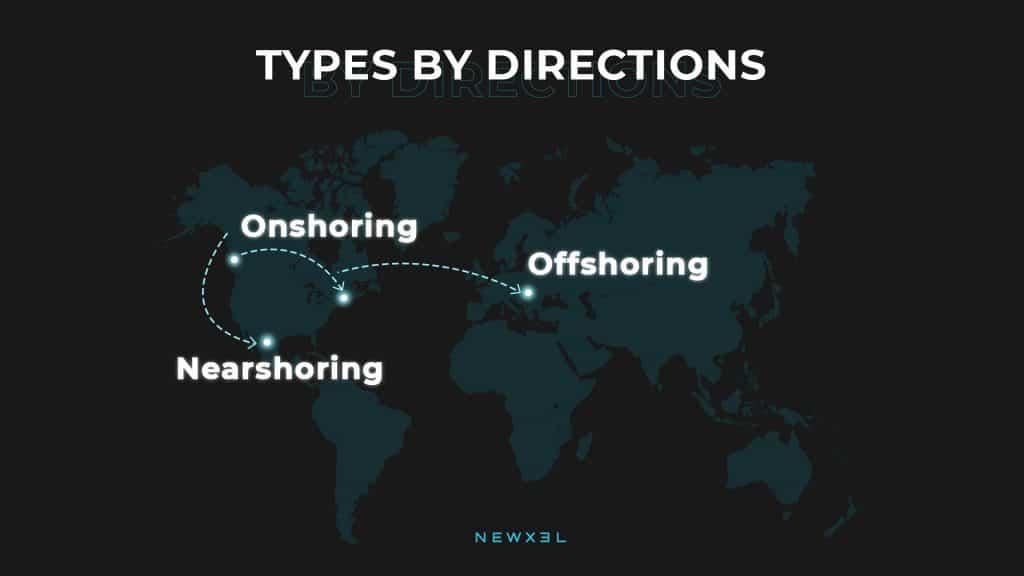IT Staff Augmentation in 2021
Before COVID-19, staff augmentation wasn’t that popular among most IT companies. However, this has significantly changed since the pandemic hit — today, staff augmentation is the new normal for tech companies around the globe. To put this into perspective, before the Coronavirus hit the world in 2019, the global outstaffing market was $92.5 billion. Fast forward, post the pandemic, now the IT staff augmentation market size is more than $132.9 billion.

Businesses throughout the world are increasingly looking to technology innovation to cut costs and increase efficiency in operations. One proven method to achieve this goal is through gathering resources and IT staff augmentation.
This is a way of extending a development team. Employing an in-house team might be difficult, especially given the time and money required to hire qualified engineers.
IT staff augmentation offers a combination of the advantages of outsourcing and employing an in-house team, allowing businesses to quickly acquire qualified programmers. As a result, we’re witnessing a steady increase in firms outsourcing services to meet these demands.
It is an undeniably good choice for businesses looking to cut operating costs while retaining maximum output. But before jumping for this service, you need to ask yourself, “What does IT staff augmentation mean?”
So, in this article, we would be looking at the IT staff augmentation trends, meaning, types, differences, and which good staff augmentation company is right for you.
What is IT Staff Augmentation?
What is staff augmentation? IT Staff augmentation definition can be given as the temporary deployment of external employees to increase your organization’s capacity.
It is a type of staffing strategy that enables you to swiftly hire staff for an extended length of time and manage teams directly.
The approach effectively offers the joint advantages of staff outsourcing and the expediency of in-house staffing when you need the following:
- Special skills
This is for when you need special skills for a project that should take some time but are not available in your in-house team. Skills like graphics design, technology or facilities setup, etc.
- To strike a strategic balance
This is for cases when you want to organize a completely qualified and flexible team to competitively stand out in the market.
- Bridge before hire
This is for cases where your company goes to a new location or ventures into a new line of business and needs qualified employees.
Busted: 5 Myths About Staff Augmentation
Despite its apparent benefits, a lot of business owners are reluctant to take staff augmentation seriously. It happens mainly because, over the time it’s been around, the concept often got misconstrued or confused with other talent sourcing models (e.g., outsourcing or freelancing).
Let’s take a look at staff augmentation myths that exist to this day and break down why they are inaccurate or simply wrong.
Myth #1. Staff augmentation = outsourcing
While there are, indeed, a lot of things in common between the two: assistance from a vendor, working with offshore talent, and high-cost reduction potential, staff augmentation, and outsourcing are not the same.
Here are the key differences between the two:
| Staff augmentation | Outsourcing | |
| Dedication | Full. The augmented team follows the same processes and workflows as the full-time team | Limited. Outsourcing developers can tackle several projects at once |
| Selection | Custom. Developers are hand-picked for the project | The team is assembled out of talent at a vendor’s disposal |
| Management control | The main office | The vendor and on-site project managers |
| Collaboration duration | Long-term | Short-term, project-based |
Myth #2. You can’t control a remote team
Before the pandemic, the absence of physical proximity to the team was a deal-breaker for many business owners. Now that most teams have been working remotely for months, team leaders have developed infrastructures for monitoring performance using time trackers and other tools.
However, if you believe hiring an augmented team will make it harder to manage and oversee developers, here are a few points that prove “no-control” concerns as baseless.
- Business owners fully manage augmented teams. While offshore engineers work remotely, they report and communicate with the main team directly. From Day 1, remote developers will be onboarded into your company’s infrastructure, use the same communication tools, attend meetings, and track progress the way everyone else does.
- Augmented teams are fully committed to the project. That’s the critical difference between outsourcing and staff augmentation: in the case of the latter, developers are working for one employer. Thus, you won’t have to worry that developers prioritize other projects over yours — they won’t be engaged in any.
- The remote collaboration will keep you out of the loop. Long-distance collaboration and time zone differences are challenging — however, they shouldn’t get in the way of the company’s workflows. Companies that provide cybersecurity staff augmentation services are specifically responsible for coordinating communication between the main office and the remote team. At Newxel, we help team leaders find the right time for meetings, keep augmented developers accountable by reminding them to file reports, and assist managers in setting up an effective infrastructure for performance tracking.
Myth #3. Staff augmentation makes sense only for large-scale companies
Another popular misconception states that staff augmentation is a sensible strategy only for enterprise-level businesses. In fact, the opposite is true: through staff aug, SME managers can get a competitive edge and outpace large-scale competitors.
Let’s make an example.
If you are the leader of a company based in the US, you compete over the talent pools with the world’s biggest companies: Google, Amazon, Facebook, Netflix, Apple, you name it. These “big” players lure highly skilled talent with prestige, salaries, and benefits, leaving small-scale business owners with breadcrumbs of excellent engineers.
On the other hand, talent augmentation is your way to outsmart the competition. By looking for talent in regions that aren’t as heavily targeted by top market players, you will be able to hire affordable yet skilled tech professionals.
Myth #4. Talent augmentation leads to lower product quality
It might seem to you that hiring a team to work remotely, not in-house, leads to bottlenecks and productivity loss. Also, you might be wondering whether offshore developers are trained well enough to meet the demands of the competitive tech market.
The truth is, there’s no correlation between talent augmentation and lower product quality. In fact, engineers working remotely are beneficial for several reasons:
- Unbiased perspective. Working with a remote team brings new ideas and insight to the project. Hiring offshore developers is a way for business owners to diversify engineering practices and create a product that appeals to global audiences.
- Developers are hand-picked for the project. Few team leaders get to hire full-time developers who specifically match ongoing tasks. Usually, talent managers are limited to choosing programmers by attitude and general skill set. When it comes to IT outstaffing, candidate selection is designed with the project in mind — meaning you’ll work with developers skilled in the niche and technologies for the product.
- Augmented developers are highly motivated. This argument has a two-fold rationale: firstly, offshore engineers are usually more committed to the projectі because they don’t have that many job openings compared to programmers in the US, Canada, or EU. Also, if you hire on markets with low average salaries, a good offer will be a powerful incentive for engineers you bring on board. Finally, many programmers want to work in international teams, as it introduces them to new experiences and broadens their professional network — that’s why they will eagerly hold on to the project.
Myth #5. Staff augmentation is risky
Hiring developers abroad might seem overwhelming and unreasonable to team leaders. After all, offshore markets tend to have unique legislation and tax policies.
The good news is, staff augmentation becomes low-risk once you find an experienced, reliable vendor. Here’s how Newxel legal, finance, and talent management experts help clients mitigate risks associated with talent augmentation:
- Take full responsibility for tax and legal management. By reaching out to Newxel, business owners don’t have to worry about being liable for administrative or financial documentation — staff augmentation companies are the official employers in the local court.
- 24/7 assistance. We help business owners avoid productivity roadblocks by regularly checking in on the team’s progress and helping project managers from the main office adjust processes so that offshore developers reach their peak efficiency.
- Transparency. Our team is open about reports and keeps real-time track of expenses, work time, etc. Upon the client’s request, we make detailed custom reports that keep you updated, while helping spot and deal with management red flags.
In comparison, you can study the difference between staff augmentation and managed IT services.
Types of Staff Augmentation Services
There are three modalities of staff augmentation based on direction. Staff augmentation might be onshoring, nearshoring, or offshoring, depending on the geographic location of the workforce.
What is Onshoring?
Onshoring definition portrays the idea that members of the outside team are based in the same country, city, or even office as the in-house team. The key benefit of this technique is that team members will be familiar with country rules, as well as language and culture.
Companies that choose this method avoid the dangers of offshoring, such as foreign taxation rules, and they also invest in their home country’s economy. Onshoring, on the other hand, is typically more expensive and can limit your talent pool. For example, a company in the USA with outside teammates from the USA too, perhaps in different cities.
What is Nearshoring?
Nearshoring definition depicts the case when teammates are based in a foreign country but are in the same general time zone. Nearshore employees for USA markets are frequently found in Latin America, with the same time zone coverage.
Nearshore is staff augmentation that reduces scheduling concerns while also giving a bigger talent pool and, in most cases, lower costs than onshore staffing. Many nearshore employees will also share cultural and linguistic understandings. In Latin America, their English skills are good, and cultural understanding of the United States is prevalent. A good example is a company in the USA receiving IT staff augmentation from countries like Mexico or Brazil.
What is Offshoring?
Offshoring definition is used to refer to a teammate who is located in a different country than the in-house team. This is the simplest offshoring meaning. It is regarded as the cost-effective method of outstaffing which provides access to a huge number of candidates of the highest expertise. Companies seek staff augmentation and it outsourcing services from suppliers in far-flung locations, most commonly Ukraine, where skill pools are plentiful.
Offshore, abroad, and foreign IT staff augmentation are all phrases that are used interchangeably. Offshore staff augmentation has some of the same advantages as nearshore staff augmentation, expert for cultural differences and time zones. However, this, in turn, can become a plus if we consider it from the point of view of the almost uninterrupted development process.

Nearshoring vs. Offshoring
To compare nearshoring vs offshoring, there are certain factors to consider.
Access to talented developers
When senior executives seek to fill tech skills gaps in their organizations, they weigh the benefits of offshoring vs nearshoring. While near shoring gives a limited supply of experienced programmers, offshore enables access to millions of IT experts looking for work. For example, Ukraine, a country in Eastern Europe, connects worldwide business with over 212,000 tech experts.
Financial benefits
Cost-effectiveness is difficult to quantify with nearshoring, especially if you’re based in the United States and nearshore to Canada. Offshoring, on the other side, can save up to 70% on expenses in nations like Ukraine due to lower developer salaries and cheaper taxes. The majority of local programmers operate as sole proprietors and pay only 5% in monthly income taxes.
Time zones
Nearshoring is the solution that allows you to have a similar time with your provider while also receiving an immediate response. Offshoring, on the other hand, provides an unanticipated benefit of time differences: nonstop business processes. Because they are always available for their consumers, this is especially advantageous for organizations that delegate technical support.
Management process
Unlike nearshoring, IT businesses used to offshore less because their executives couldn’t visit their overseas headquarters frequently. However, the epidemic has made remote work a requirement; worker locations are no longer relevant, and offshore has become up-to-the-minute. Even if their teams are miles apart, tech companies organize and run their teams using online platforms like Zoom, Slack, or Skype.
Intellectual property rights
When developing online or mobile apps with outside providers, every forward-thinking business leader wants to maintain IP in-house.
Offshoring vs. Onshoring
To compare offshoring vs onshoring, there are some factors we need to consider:
Price & Expertise
When compared to onshore or nearshore options, offshoring is much more cost-effective for IT staff augmentation, offering, in some cases, even better skill sets and expertise. On the other hand, onshoring is the most expensive alternative. In affluent economies, IT specialists are usually always in short supply, hence they command a premium.
Language and professional culture
Because there are so many ‘offshore’ outstaffing sites, there is a greater degree of variation in language and professional culture compatibility between the employer and outstaffing partner.
When working with onshore partners, on the other hand, language and professional culture compatibility is usually not a challenge. However, there’s no surety that onshore experts will have a solid professional level of English if the client organization’s working language is English but their native language isn’t.
Legal and tax systems
The legal and tax systems in offshore outsourcing locales are frequently substantially different from those in the client organization. In some situations, this can be advantageous. However, it can cause issues, especially if the two countries do not have formal tax arrangements in place.
So, when bigger sums of money are involved, the accessibility of legal recourse is unquestionably a risk aspect to consider. But, in an onshoring model, the outstaffing partner may assist on this and make things work.
IT Staff Augmentation by the Form of Cooperation
Staffing services can also be distinguished based on the best of your company’s specific requirements by the form of cooperation.
Traditional Outstaffing Services Providers
These traditional vendors provide services based on specialized levels of skills for specific projects. With this type of service, you can hire talent of any required specialization regardless of the technological stack. Best fit for hiring full-fledged development teams.
Boutique Agencies
These are small staff augmentation companies that emphasize specialized talent. They require highly skilled personnel for times when you would need particular skill sets. They offer very specific professionals, albeit at a high cost.
On-demand Talent Platforms
These platforms offer access to self-regulating experts through online resources. They are best for needs based on tasks for particular or multiple skill sets. There are minimal recruitment hassles as they provide quick hiring and flexibility for remote skills. However, it is a little challenging to differentiate the candidates, and also, the talents are shared around the globe.
Freelance Recruiters
These contractors are approached directly by companies that are seeking their services. They offer highly skilled staff for positions that should be occupied by particular experts. They offer good quality but it is often hard to find and maintain such relationships. Besides, one recruiter can’t close, for instance, 5 positions as quickly, as big vendors do.
Differences Between Traditional Outsourcing and IT Staff Augmentation
The following distinctions make it more reliable and efficient in comparison to the outsourcing model.
Hiring process
The extended development team will be exclusively recruited for you, according to your specific requirements and project goals. For instance, at Newxel, we don’t have developers on our side, we have much more – access to a vast tech talent pool.
The recruitment process starts after receiving detailed team requirements from our customers. It’s vital to mention team size, job description (stack, tasks, software developer’s qualification level, etc), budgets, hiring process and who is responsible for each stage.
Candidates pre-selected by our recruitment experts also get interviewed by you. Only you can make the final hiring decision and tell us whether the candidate is suitable or not, who gets hired and who gets rejected. Moreover, Newxel provides a full-transparency in the candidate salary negotiations process. We build a long-term partnership with our customers and transparency is essential for both sides.
In short, staff augmentation services allow you to take an active part in the recruitment process and pick the right candidates. An offshore vendor is responsible for the hiring process to connect you with superior candidates quickly.
Team and Project Management
The extended development team operates in the same way as your in-house team, just located in a foreign country. Manage your offshore staff in the way you prefer using your ideal methodology: Agile, Scrum, Kanban, Scrumban, etc. Don’t forget about establishing a direct communication process and sharing clear goals with your offshore-based team.
In short, compared to project outsourcing, staff augmentation provides more control over the workflow and the team. When you handle the management operations yourself, it gives you more authority than when you leave team management to the outsourcing provider.
Ways to manage your extended development team
– Remote management with regular stands up meetings and visits.
– Hire a manager in the offshore country who will be responsible for the team and project management (Team Lead, Product Manager, etc). In this case, you should establish direct communication with a manager, share your goals, vision, and stages with him/her.
Costs
The most flexible and transparent pricing model is called Cost Plus. You know exactly how much each of your developers is paid, what taxes and payrolls are covered, and what services are included in the vendor’s monthly fee.
Fixed monthly fee includes:
Recruitment
HR processes
Newxel Account Manager (daily support)
Newxel People Partner (daily support)
Separate office space
Well-equipped workplace for each of your employee
Equipment
IT & Network Infrastructure
Security
Client Branding
Legal support
Finance support: bookkeeping, payroll, accounting
Office management and maintenance services
Support with purchases
Business travel support
Social Benefits for your employees
PR support
Get in touch with us to Request a Free Estimate
Intellectual Property Protection
Sharing IP assets with an outsourcing company may lead to some risks and irreparable harm. Yep, IP is at the heart of your business. By choosing a staff augmentation model you protect all valuable assets and IP rights.
As an offshore team vendor, Newxel doesn’t have access to your code, test data results, confidential information, or any other information associated with the development process. Your extended team operates in isolated office space under your direct guidance, protecting project outputs and IP rights.
Also, at Newxel we retain a highly secure IT infrastructure for your confidential business information, which is reinforced by executing a legal contract – NDA.
Constant Support
Along with a dedicated development team, you will be provided with the full and constant support of the offshore vendor. A dedicated account manager acts as a bridge between you and your extended team.
Newxel’s operation team: HR managers, recruiters, finance, account, legal and facility managers, and system administrators work to fulfill your needs, build and support your development team in Ukraine. While you and your extended team develop innovative software products or solutions, we take care of HR and all back-office services.
Newxel: Your Reliable Service Provider
At Newxel, we offer flexible, reliable, and proven services on IT staff augmentation in Ukraine. Regardless of the specificity of your project, you can rest assured that our thorough recruiters will assemble a proficient team of tech experts to exceed your expectations on a reasonable budget.
So, do well to contact us if you want to hire programmers remotely to augment your team today.




